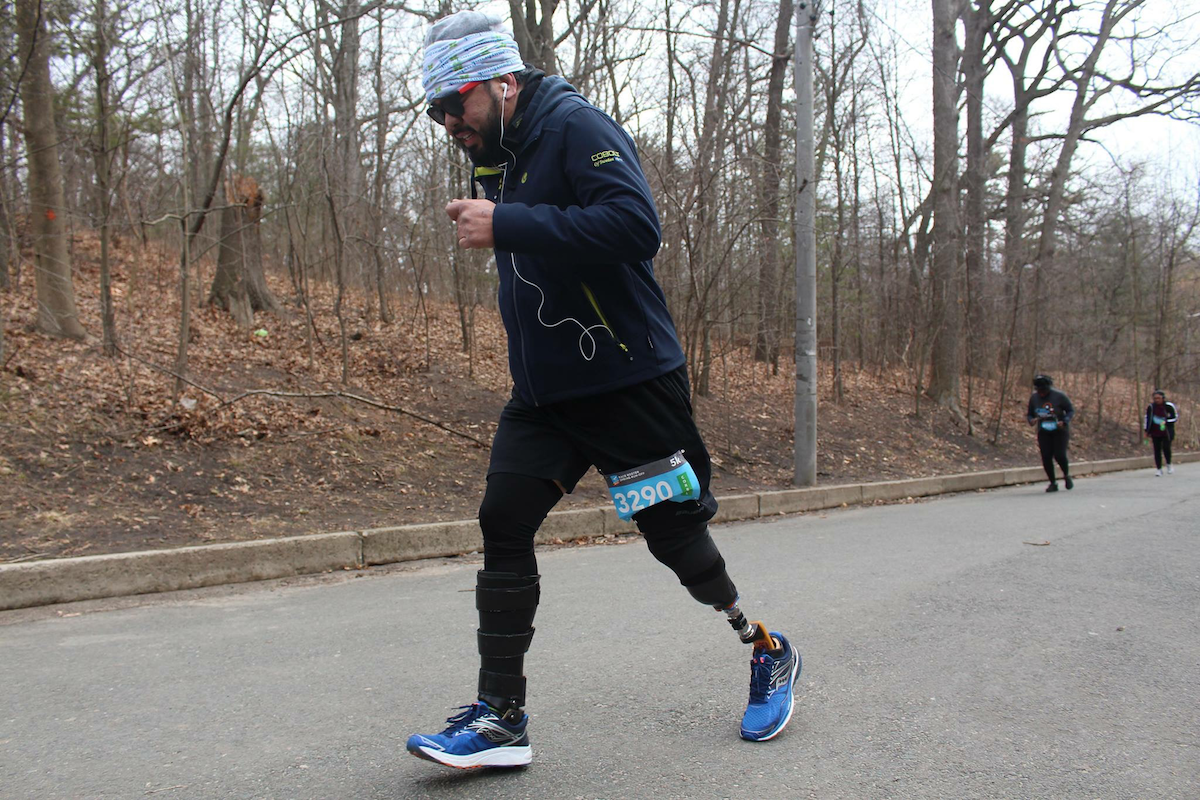
Aristotle Domingo has had his left leg amputated below the knee and his right foot partially amputated, yet he has found the will power to continue running

Aristotle Domingo has had his left leg amputated below the knee and his right foot partially amputated, yet he has found the will power to continue running
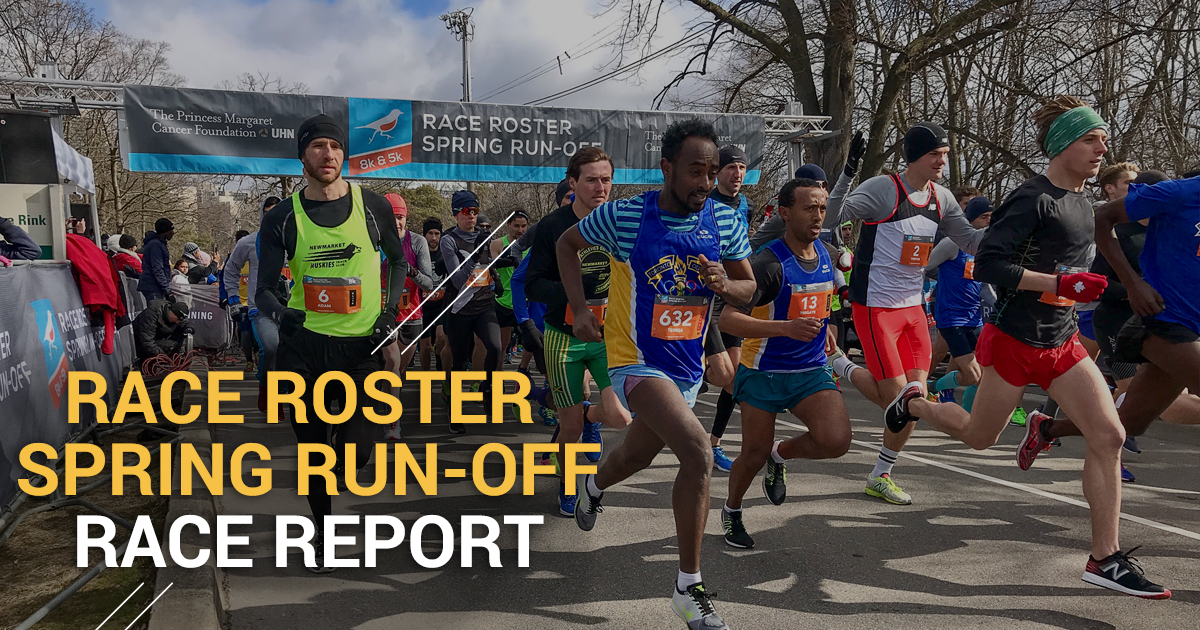
By Paul Gains
Tristan Woodfine successfully defended his Race Roster Spring Run Off 8k title today while the women’s race went to London, Ontario’s Leslie Sexton.
Held in Toronto’s scenic High Park for the 41st consecutive year, the race launched the 2018 Canada Running Series. Spring seemed to have been delayed though as runners were subjected to sub-freezing temperatures and a strong wind.
Sexton and Woodfine, who is studying to be a paramedic at the Ontario Health and Technology College, were the 2017 CRS overall champions. They both earn 45 points to go to the top of this year’s CRS points race.
Brave early front running from Kyle Grieve, proved beneficial to Woodfine.
The 24 year old towed the field through the halfway point in 12:27 with Woodfine, Trevor Hofbauer and a half dozen other ambitious contenders two seconds behind. But over the next two kilometres Hofbauer, who was using the race as both a workout and a fitness test before racing the Prague Marathon next month, took command.
The Spring Run Off finishes atop a steep 352 metre climb and it was just before the foot of this hill that Woodfine made a decisive move. Charging past the tall figure of Hofbauer he eventually squeezed out a ten second margin of victory stopping the clock at 24:36 to earn $2,000 first place prize money.
Hofbauer held on to second while Grieve was an impressive third in 24:52.
“It’s definitely a positive sign,” Woodfine said of his win. “I have been doing marathon training, lots of marathon tempo, so coming down to 8k and being able to race pretty quick is nice because I haven’t done much running at that pace. I am definitely happy.”
“I got up that first hill at 3k feeling pretty good and thought ‘alright if I can hold this effort the next couple of kilometres I should be able to punch out that last 2k pretty good’ And, knowing this course, if you go out too hard that last ‘K’ will punish you.”
Hofbauer, who was first Canadian finisher at last year’s Scotiabank Toronto Waterfront Marathon, and was crowned 2017 Canadian Marathon Champion, was pleased with his performance.
“I was catching up on Kyle but then Tristan blew by me,” he said. “I told him to ‘go get it.’ I wasn’t concerned about pushing on that hill. Tristan got it and I am happy for him. I think I am in a good spot and will have to see how it plays out in a few weeks.”
Sexton’s victory was impressive. By three kilometres she had a commanding lead. The expected challenge from Sasha Gollish never materialized as the 36 year old Canadian international stepped off the course unable to overcome the flu.
By 4k, which she reached in 13:55, Sexton had an advantage of more than twenty seconds. At the finish she had stretched that to 59 seconds, finishing in 27:53 with Laura Desjardins of the Newmarket Huskies second in 28:52. Rachel Hannah of New Balance, the 2015 Pan Am Games marathon bronze medalist who had also been suffering from a cold, finished third in 29:21.
“I am happy with how that went,” a very composed Sexton revealed. “I actually came down with a cold a few day ago and so I wasn’t sure if I was going to be ready to race today. I was feeling alright this morning, so I thought I would go out and give it a good effort and not worry about the time.
“I am happy with it. It’s a big confidence boost going into the Banque Scotia 21k de Montreal two weeks from now. I was pushing the pace from the start. At the hill around 3k Sasha must have pulled out. The bottom of the hill I had people with me; when I was at the top I sort of looked behind me and didn’t see anyone behind me.”
Desjardins, another in the long line of national class runners coached by Hugh Cameron, was pleased to be on the podium
“To be honest, I don’t have as much experience as those other girls have. I just did what my coach said ‘stay positive throughout the whole thing.’ I knew they were ahead of me but I just stayed focused on what I was doing and didn’t worry about anyone else.
“People were telling me I was second but I just was always thinking ‘someone could be coming up behind you.’ I felt pretty strong, my coach is big into hills. So it was tough but I kept pushing until the end.”
This was the 41st running of the Spring Run Off and once again the race got underway with the traditional playing of bagpiper Dave McGonigal. Perhaps he was the only one present to have wished for a warmer day. He wore his kilt.
For full results, visit springrunoff.ca
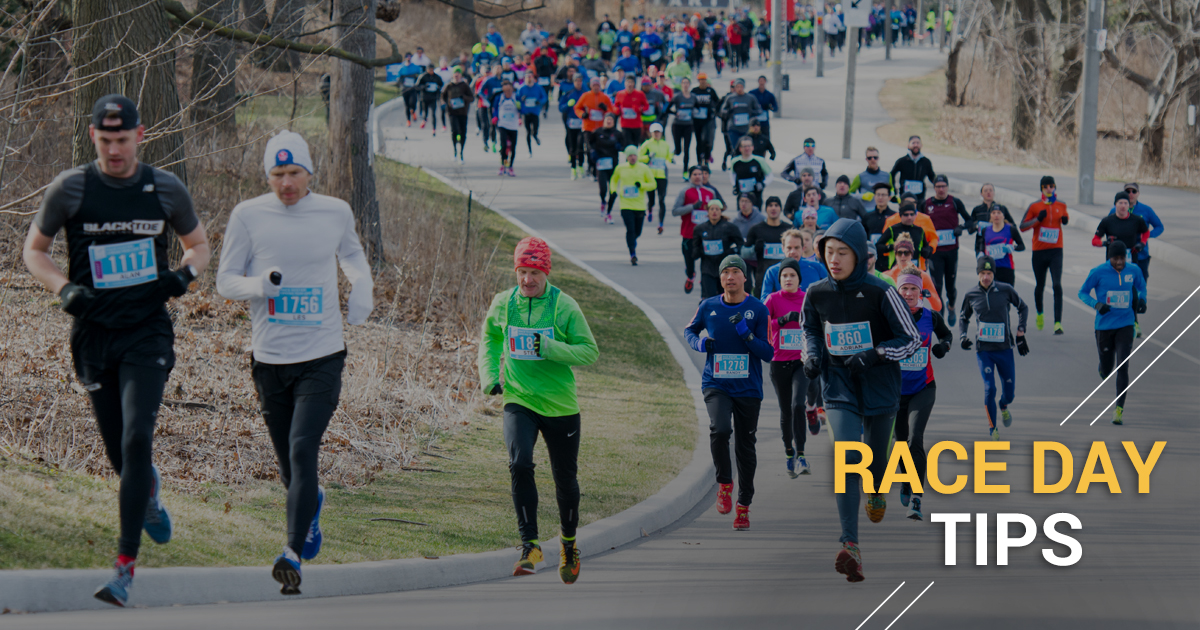
By Coach Colin, High Park Rogue Runners
You’ve done it. You’re injury-free, you’re fit, you braved the early mornings and winter weather and now you’re race ready. So, what next? Tackling this course requires a bit more planning than your regular race. The allure of the course is its scenery, its mixed terrain, and above all else, its signature hills. With just a few tips and a little bit of planning, you’ll be all set to make the most of your fitness and have a great race.
Perhaps the best advice I can give on race day is to leave the watch at home. Gasp, I know! But, the hills that give the Spring Run-Off its reputation are the hills that make traditional pacing extremely difficult. Instead, focus on how you feel. Even the flattest stretches of this race are covered in rolling hills. As such, your pace will fluctuate during the race and focusing too intently on your pace can demoralize you. Relax, take a deep breath, put the watch down, and focus on running well and having fun! You’ll be surprised how well you can do by listening to your body and enjoying your surroundings.
The Start of the Race
There are two big hills in the 8k race – Centre Road and Spring Road – and one big hill in the 5k race – Spring Road. If you’re doing the 8k, Centre Road hill is about 3k into the race. If you go out too hard, this hill will let you know. Try to stay relaxed at the start of the race and don’t let your adrenaline fool you. After about 300m the hill levels out with a much smaller incline. Whatever you do, just don’t panic. Stay focused on your form, stay relaxed, and when you get to the top of the hill, instead of stopping to catch your breath, take a deep breath and keep running – remember what you practiced in training with flat stretches after a hill. You’ll be surprised how quickly your heart rate goes back down after you crest the hill. Count to five in your head and you’ll notice most of that discomfort is already gone!
The Downhills
As much as we’ve focused on the uphill portions of this race, there are a considerable number of downhill sections as well. When you’re running downhill, try to let the force of gravity pull you. Don’t try to force yourself to slow down – that breaking motion can create a jarring effect on your legs, which will slow you down and create more fatigue. Running at the rate the hill pulls you will get you down the hill the quickest with the least amount of strain. Just stay relaxed, and lean slightly forward. Let the hill do the work.
Spring Road. La pièce de résistance.
Spring Road: the place where legends are made. The epic showdown for the coveted title of King and Queen of the Hill! We’ve touched on all of the basics that will help you crush this hill – don’t start the race too fast, stay relaxed, don’t panic, drive the knees and arms, focus on form, and don’t slouch those shoulders when you fatigue – but what I want to emphasize about this hill is actually what comes before it… a flat stretch of ground! The hill is at the end of Spring Road. The road itself is about 1.2k long, which includes nearly 900m of flat running before reaching the hill. In my experience, once people get to Spring Road, they feel like they’re in the home stretch and pick up their effort. 900m is a long way to get though, especially when there’s a large hill after it! My advice is again to stay calm and keep your effort the same, not to increase it. Don’t get carried away by what feels like the first stretch of flat ground you’ve experienced all day. Conserve that last bit of energy for the grand finale! Once you arrive at the hill, buckle down and dig deep. Let the sounds of the cheering crowds pull you along and bask in the knowledge that in just 300m you will have conquered this beast! You’ve got this!
Above all else, just have fun! This is a wonderful race in a beautiful park with lots of amazing people! Enjoy the race and immerse yourself in the full experience! I’ll be there to cheer you all up those hills! Best of luck!
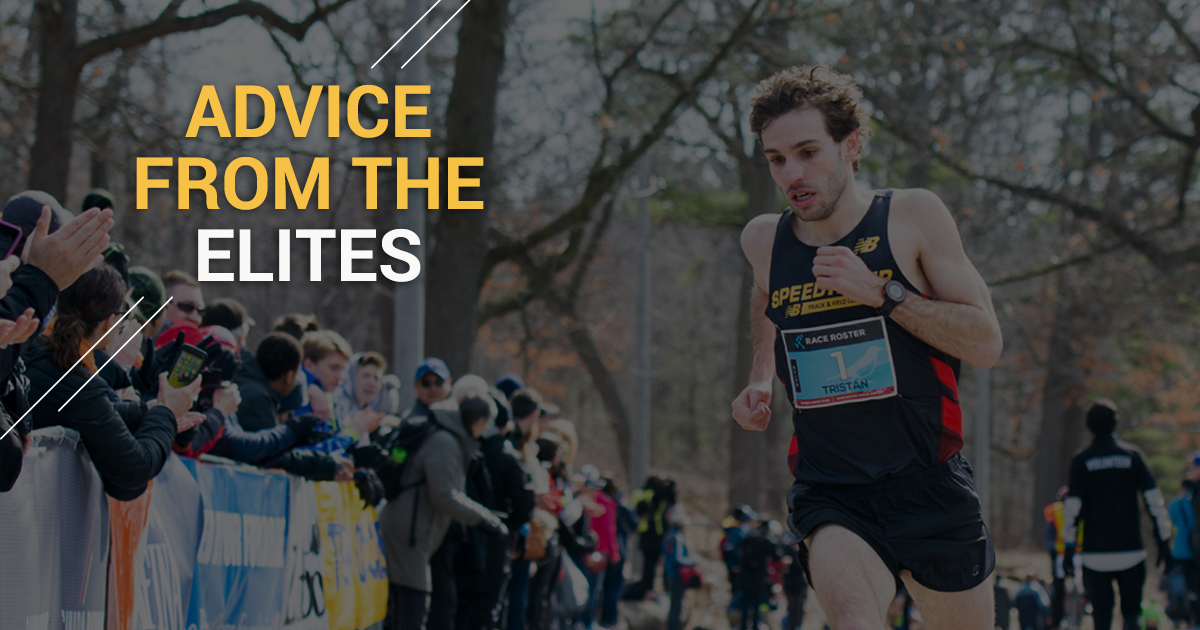
Tristan Woodfine, defending RRSRO champion:
“I’d say to make sure to save something for that last kilometre with that hill. If you come into that too tired it’s a brutal hill. Save a little bit for that.”
Rachel Hannah, 2015 Pan Am Games marathon bronze medalist
“Obviously you don’t want to go out too hard. One thing in the back of my mind, I left something for the end (when winning the 2016 RRSRO). This one I saved a little bit extra for the end. If it comes down to you and another person on that hill you want to have as much energy as possible.
“If you have a couple of weeks of training it’s good to incorporate some hills. You can do some hills running at the end of a workout just to simulate that feeling of burning in your legs.”
Trevor Hofbauer, 2017 Canadian Marathon Champion
“My advice would be to enjoy the moment as much as possible, regardless of race time, and save some energy for the final hill. Being the first Canada Running Series event of the year and, for many, their first race of the year, it’s best to run the race with a focus on enjoying the experience over any sort of
performance goal.
“For tackling that final 365m hill, I’d advise incorporating hills into easy runs or workouts over the next few next weeks to build strength. It’s as simple as finding a 100-200m hill and running up three or four times at a race effort towards the end of your run.”
Alex Hutchinson, author of ‘Endurance: Mind, Body, and the Curiously Elastic Limits of Human Performance’:
“My usual advice for tackling hills in a race is to take it easier than you think you should, with the goal of maintaining your effort rather than your pace. For the ‘Kill the Hill Challenge’ my advice is different. Because it’s right at the end of the race my advice is simple: sprint! It’ll hurt, but that’s okay because
you’re almost done!”
Leslie Sexton, 2017 Canadian Marathon Champion and defending CRS champion:
“Don’t get sucked into going too fast too early. You can’t worry too much about the hill. It’s at the end of the race anyway so you are going to give it whatever you have left. So being smart early on can really help.”
Sasha Gollish, Canadian national team member
“The first race of the season shouldn’t be your best race, nobody wants to peak early! It’s where you get to test out the training you’ve put in over the winter, feel the roads again under your feet, compete with a whole bunch of people around you again.The hill hurts everyone, elite, newbie, veteran alike.
No matter how fast you get to the hill or up the hill, it still stings.”
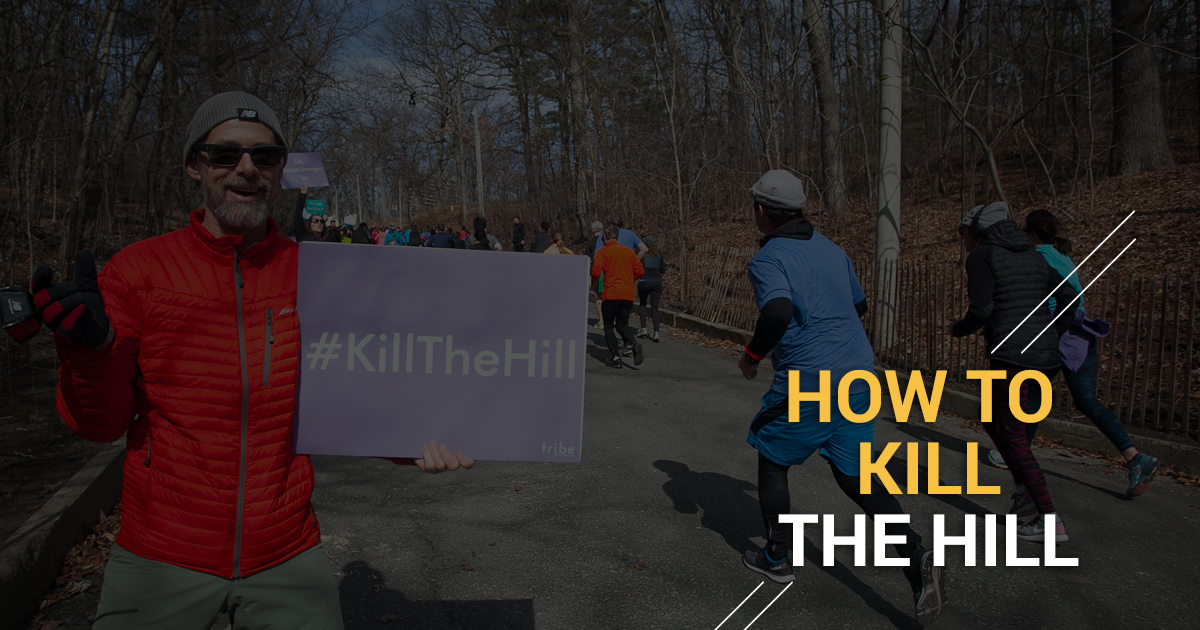
By Coach Colin, High Park Rogue Runners
Hills, hills, hills.
It’s difficult to think of the Race Roster Spring Run Off and not think of hills. In fact, both the 5k and 8k race have built their reputation around the steep climb up Spring Road just before the finish line. You could probably count the number of feet of level ground in this race on just one hand. So, how do you possibly prepare for this?
You might find it surprising, but tackling this race doesn’t require an overhaul of your training. Just a few small shifts can make a significant difference in how you perform come race day:
Step 1: Get to race day healthy!
When selecting or designing a training program, make sure you’re choosing the one that gives you the greatest odds of getting to race day in one piece! Try to avoid programs with drastic jumps in number of days you run, weekly mileage, or intensity.
Cold weather can make it tough to stay motivated, and the tendency is for people to try to make up for lost time by cramming as much training into a short time frame as possible. Unfortunately, this greatly increases your risk of injuries. Instead, consider finding a group of people to run with to keep you accountable to your training. The city is filled with run crews, clubs, and stores with training groups that cater to all levels of runners. The best way to stay healthy is to enjoy the process!
Step 2: Add a bit of specificity to your training.
If you want to get better at hills, you’re going to have to run some hills. This doesn’t mean you have to go out and find the steepest hill and run it until you pass out. Simply changing your route to include a few hills once a week, or adding a few hill sprints to the end of one of your weekly runs can make a big difference.
Hill sprints: Find a hill with a moderate slope, and run for 5 to 10 seconds at about 90% effort up that hill. Stop, walk down the hill, let your heart rate lower, then do it again. 4 to 6 hill repeats once a week is a great way for you to increase your strength on hills, even if you’re a more seasoned runner. If you’re new to running, I would wait until you have a solid base (minimum of four weeks of injury-free, consistent running) before adding them to your training.
For veteran runners looking to add a few more hills to your training, consider some longer hill repeats. Set aside one run day as a hill workout. Start with an easy 10-minute warm up, then find a hill that’s about 300m long (the finishing hill of the race on Spring Road in High Park is the perfect option when it’s clear of ice and snow). You can start with a couple hill sprints, then follow it up by running the entire hill at an 80% effort. I always prefer to add a flat stretch of about 50m after the hill to continue the hard effort so that I get used to running through the hill, not just up it – remember, that finish line isn’t directly at the top of the hill, you still have about 100m to go once you’re up!
If this is your first time adding hill workouts to your training, start with a lower number of reps – two or three – then add one rep each week. Again, it’s always best to get a solid base of fitness before adding these to your training, so consider adding them to your training about four weeks in if all things have gone smoothly.
I usually recommend cutting the hill workouts out of your training about two weeks out from race day so you can focus on recovering a bit more. Switch to flatter routes with some rolling hills in those last two weeks. Finish each hill workout with a 10-minute easy cool down.
Step 3: Focus on your form.
If you want to make the hills a little bit easier, you can do a few things to focus on your form while running. Drive your knees and pump your arms. When your legs start to tire, really focus on keeping those arms pumping. You’ll be surprised how effective this can be when you start to feel like you can’t lift your knees anymore!
Keep your torso upright and your eyes straightforward. The tendency is for most people to look up to the crest of the hill to keep them moving forward, but if you’re looking too far up it can shift your body weight too far back, which adds more effort to running up the hill. I find staring at the crest of the hill can also become demoralizing when you’re tiring, so keep those eyes straight ahead and up a few feet and just focus on staying calm, maintaining good form, and doing your best. Instinctively, when we start to tire we slump our shoulders. It’s important to keep ourselves from doing this though, as it makes it harder to get enough oxygen to keep working hard. Keep that torso upright even when you start to fatigue!
If nothing else, focusing on your form while running up the hill can provide a welcome distraction from the discomfort of the hill!
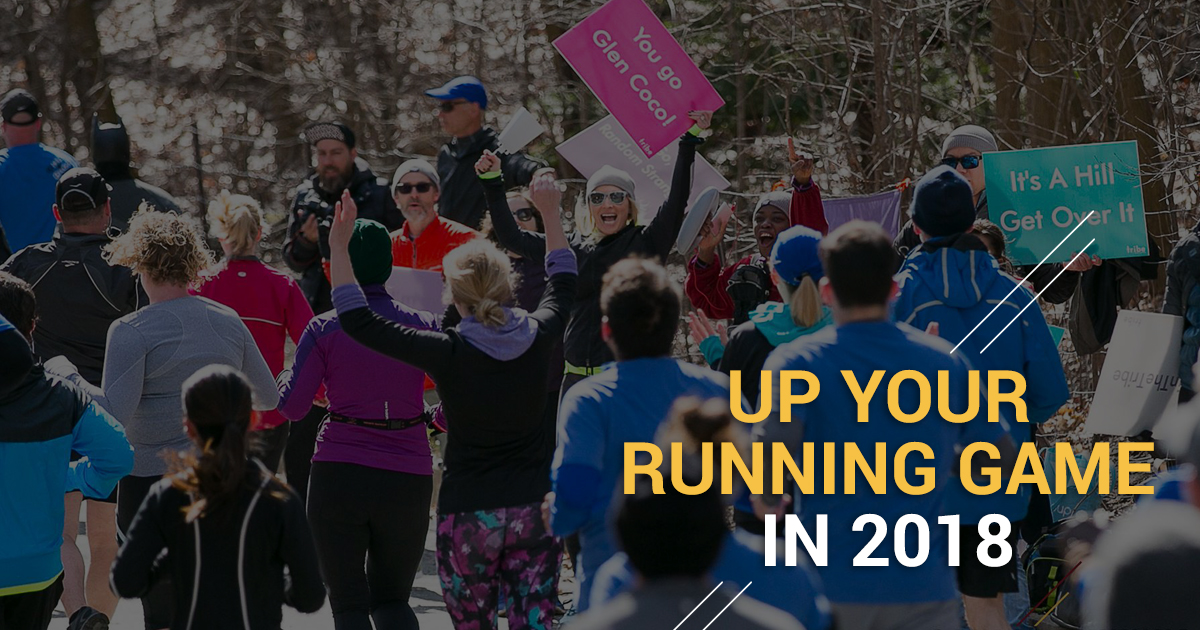
By Heather Gardner, founder of Tribe Fitness.
The start of a new year is a great time to set goals and try something new. So whether you are starting to run for fun, or are fired up as a goal crusher. Here are 5 tips to help you up your running game in 2018!
5 Tips to Run for Fun!
1. Track progress. Whether it’s on your favourite app (there are so many out there) or on an old fashioned calendar on your fridge, tracking your workouts, recording how you feel, or even checking something off your monthly workout plan will give you that extra feeling of progress and accomplishment.
2. Create the perfect playlist or find the perfect podcast. Music or podcasts can be a great motivator to help you get to into the running mood! Make a new playlist filled with high-tempo tracks or save a new podcast for each workout to inspire you to keep moving while on route.
3. Sign up for a race/fun run. Committing to an event gives you a good reason to create a training plan and stick to it. Start planning ahead now, the Race Roster Spring Run Off is just around the corner.
4. Fuel up. Running on an empty stomach can keep you from having the right amount of energy, but eating too much can lead to cramping. Look for a small snack containing carbs and protein for sustained energy.
5. Join a run Tribe. Whether it’s a friend or family member, community run crew, or virtual group of online friends, having people with a similar interest to connect with and learn from will help keep you accountable and having fun.
5 Tips for the Goal Crushers!
1. Get into proper form. It may seem like the simplest way to work out, but running does take knowledge and skill to make sure you don’t end up on the injured list. Get reading, listening, or meeting with professionals in your community to make sure you’re running to the best of your ability.
2. Get out of town! Taking your runs to new roads is a great way to combine travel and your favourite sport. Destination races within Canada or abroad will leave you with a new sense of adventure and motivation to move.
3. Cross train. Don’t limit yourself to improving your pace only out on the road. There are many things you can do when you aren’t running that can help: Take a yoga class to improve your flexibility; strength train regularly to build speed and prevent injuries; meditate to find focus and calm those pre-race jitters.
4. Roll out. Massage your muscles with a roller to increase flexibility and range of movement in the knees while breaking down scar tissue and adhesions.
5. Give back. Whether you volunteer to help a new group of runners get their start, support your local school’s track and friend day, or give your time stuffing kits at a race expo, giving your time back to the sport you love will leave you filled with gratitude and pride for your local run community.
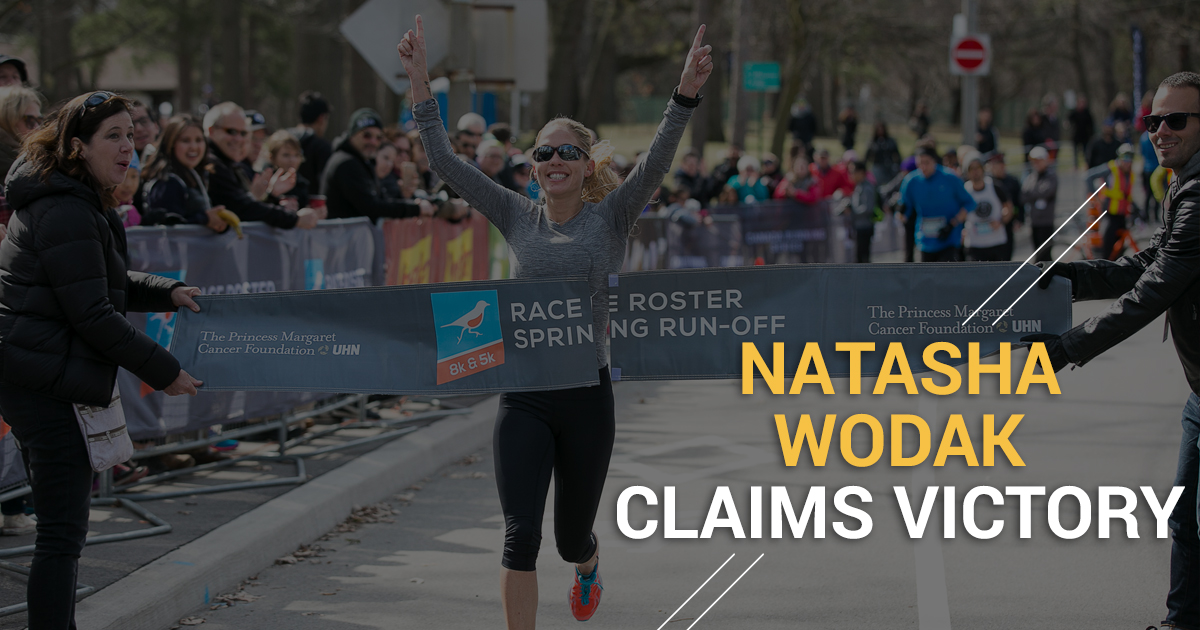
Natasha Wodak’s first race after surgery on her foot three months ago proved successful as the 35 year old Canadian Olympian handily won the Race Roster Spring Run-Off 8k in Toronto’s High Park.
More than 3,500 runners were led to the start line by piper Duncan McIntyre, a tradition since the race’s inception 40 years ago, but Wodak was never challenged. This edition launched the 2017 Canada Running Series.
With a cold wind blowing across the hilly course, Wodak, the Canadian record holder at 10,000m on the track (31:41.59) and at 8km (25:28) on the roads, tucked in behind a few of the male runners early on until she dropped them one by one. She crossed the line with a smile while flashing ‘V’ for victory signs. Her winning time was 27:55.
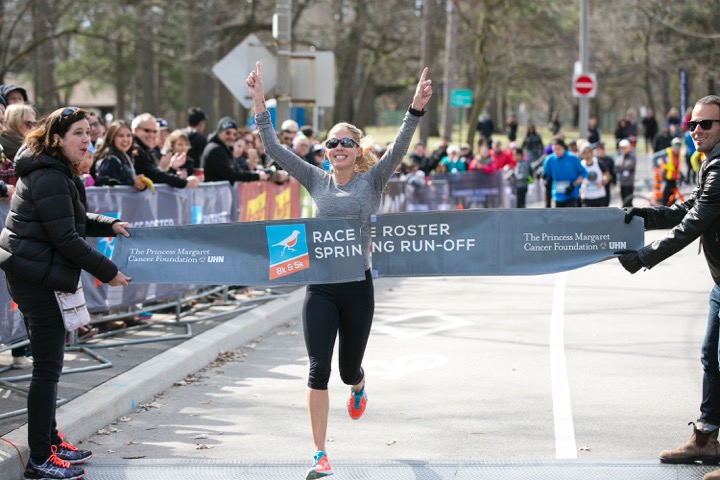
Photo credit: Inge Johnson/Canada Running Series
“I figured I was capable of running about 27:45 to 28:00,” the Vancouver resident said afterwards. “I thought that would be really painful for me at this point. But I felt really strong and it felt more like a tempo run than anything, So I am really pleased with where I am at considering it has been such a short time since I have been back running since my surgery. It’s good. I am excited for the spring”
“Everybody told me it was super hilly but with the uphills come the nice down hills so it evens out. It was a beautiful course and I had lots of guys out there to talk to and complain about the hills and stuff. I thought it was a great course. Lots of fun.”
Wodak earned $1,500 for the victory which will come in especially handy since her contract with Asics ended following the Rio Olympics Games. Next on her schedule is the Vancouver Sun Run, a race she has won on two previous occasions. A fall marathon is also in the cards.
“I still have two weeks of training until the Sun Run so I can get in little bit better shape,” she continued. “This was a good opportunity to get back racing and hurt a bit. You can train all you want but races are only going to give you that certain hurt that you need. I am excited.”
Following the race the good natured athlete joined in with the children’s 800m race saying “Those kids run fast.”
Second place in the women’s division went to 45 year old Lioudmila Kortchaguina in 28:45. The Russian born master’s competitor represented Canada at the 2007 IAAF World Championships in Osaka and sports a best marathon time of 2:29:42
There was little surprise in the men’s race as Tristan Woodfine of Speed River Track Club crossed the finish line first as expected. But what the mass of spectators near the finish area could not have known was drama played out on the back end of the course during the first 2 kilometres. Woodfine had a technical issue.
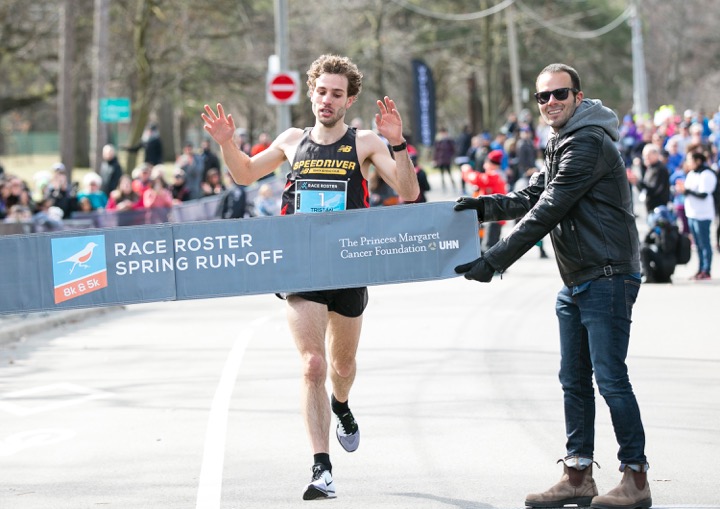
Photo credit: Inge Johnson/Canada Running Series
“I was leading but my shoe came untied so I had to stop and pull over and retie,” he said with a laugh. “I was worried it would come off. A few of the guys passed me so I then had to work hard to catch up again.
Woodfine led through the half way 4km point (12:08) with Sergio Raez Villanueva a couple of seconds behind.
“Probably around the 4km mark he actually caught up with me and we ran together from 6km until 7km then I put in a surge,” he revealed. “I could always hear him behind me. So I knew he was right there and it kept me honest.”
Woodfine’s winning time was 24:15 while Raez Villanueva was timed in 24:29. Kevin Tree took third in 24:59.
“I am very happy,” Woodfine said later. “It’s a hilly course, a tough course, so I wasn’t too concerned about a fast time. It was just go out and see where that leads me. It was a successful race. It was my first time here.”
Proceeds from the Race Roster Spring Run Off 8km go to the Princess Margaret Cancer Centre.
The next race in the Canada Running Series will be the Banque Scotia 21k de Montreal on April 23rd.
-30-
Complete results and photos:
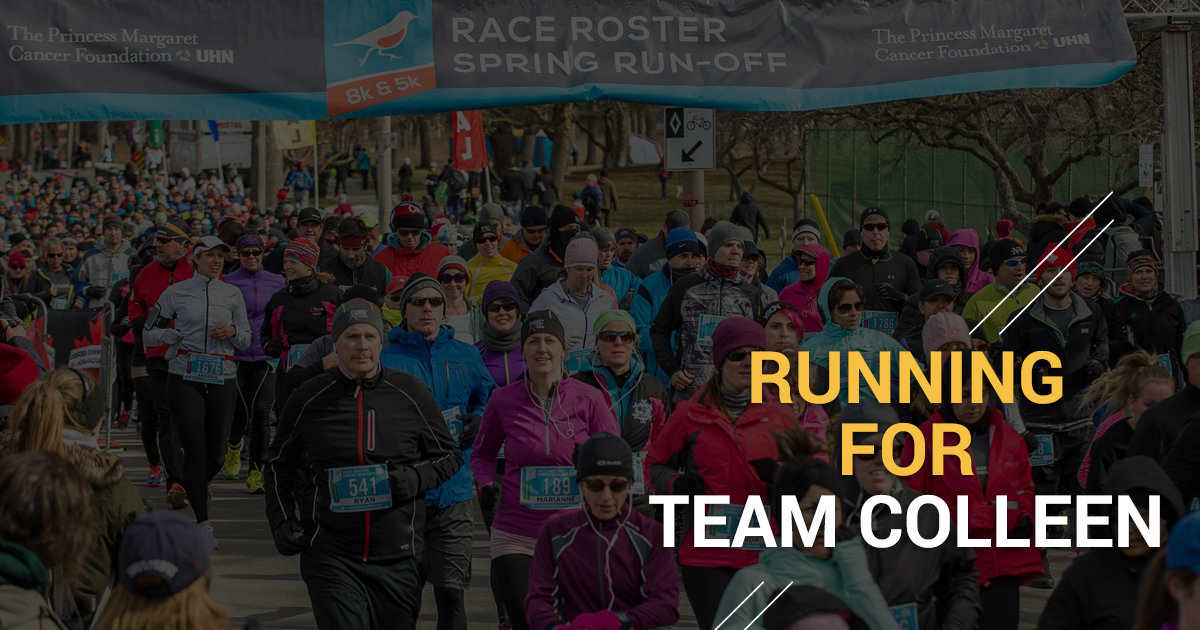
For Jordan Milchman, signing up for the Race Roster Spring Run-Off was supposed to signify a long-awaited return to running after a year beset by injury.
Milchman, who completed his first-ever half-marathon two years ago at the Scotiabank Toronto Waterfront Marathon, spent the better part of 2016 dealing with a persistent back injury. By January of this year, a newly-recovered Milchman started looking at goal races for 2017.
With its notoriously challenging course winding through the hills of High Park, the Race Roster Spring Run-Off looked to him like the perfect tune-up on the road to a spring return to the half-marathon distance.
“I’ve never done an 8K before,” Milchman explains. “So I thought, I’m automatically gonna set a personal best.” Excited by the prospect of racing again, he signed up.
Two days later, things changed, when Milchman’s colleague and longtime friend Colleen Liao was diagnosed with cancer.
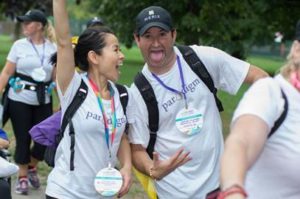 Liao, who Milchman describes as “my coworker, my buddy, and one of the best people I know”, is no stranger to the disease. Four years earlier, shortly after Colleen and her husband Len learned that they were expecting their first child, Liao was diagnosed with stage three breast cancer.
Liao, who Milchman describes as “my coworker, my buddy, and one of the best people I know”, is no stranger to the disease. Four years earlier, shortly after Colleen and her husband Len learned that they were expecting their first child, Liao was diagnosed with stage three breast cancer.
“Colleen is a certified badass,” Milchman says of his friend, who underwent a lumpectomy at 12 weeks pregnant, followed by chemotherapy at 22 weeks.
Her body responded well to the treatment, with Liao receiving the much hoped-for “all clear” from her doctors shortly before the birth of her son, Chase. Newly cancer-free and relishing life as a new mom, Liao returned to work, where she and Milchman became fast friends, bonding over a shared irreverent sense of humour.
“We always found each other funny,” he recalls of their early days working together. “We laughed a lot.”
So when his friend learned early this year that her cancer had returned, Milchman decided to enter the Race Roster Spring Run-Off to support Liao.
Along with a few friends, Milchman switched his individual registration to a charity entry and began fundraising as the captain of “Team Colleen”. And though the team’s goals were modest at first, the response to their cause has been anything but.
“When we started out, our team goal was $3,000,” he recalls. “I think we hit that on the first day. A lot of people have been quite generous.”
Donations to Team Colleen benefit the Princess Margaret Cancer Centre, a global leader in cancer research, and one of the largest comprehensive cancer treatment facilities in the world.
With less than two weeks until race day on Saturday, April 8th, Team Colleen has now raised more than $8,000 and counting towards their revised $10,000 goal. Looking over the list of individual donations, Milchman notes that much of it has come from fellow friends and colleagues who, like him, have been touched by Liao’s enduring tenacity and indomitable spirit in the face of what appear to be increasingly long odds.
For her part, Liao has chosen to focus on spending time with her husband and three-year-old son since her rediagnosis, prioritizing her health, family, and happiness as much as possible.
“Colleen is a very strong person,” Milchman says. “She’s very positive, very upbeat. She knows what’s coming, but she just stays very positive.”
Her outlook has had a ripple effect. With friends, colleagues, and strangers alike throwing their support behind Team Colleen, donations in support of the Princess Margaret Cancer Centre continue to pour in. It’s a momentum that Milchman hopes will continue right up to race day, and beyond.
“We have all been connected to cancer in one way or another,” he says. “We’re doing what we can to ensure we never have to encounter it again.”
To support Team Colleen and the Princess Margaret Cancer Centre, or to get involved with fundraising, visit their fundraising page.
Support Team Colleen: http://runcrs.co/2o7R9Ra
Make a general donation to the event: http://runcrs.co/2nh6OsG
We thank participants for raising money for the Princess Margaret Cancer Centre and look forward to seeing you at the Race Roster Spring Run-Off on April 8th.
Registration is still open at http://springrunoff.ca
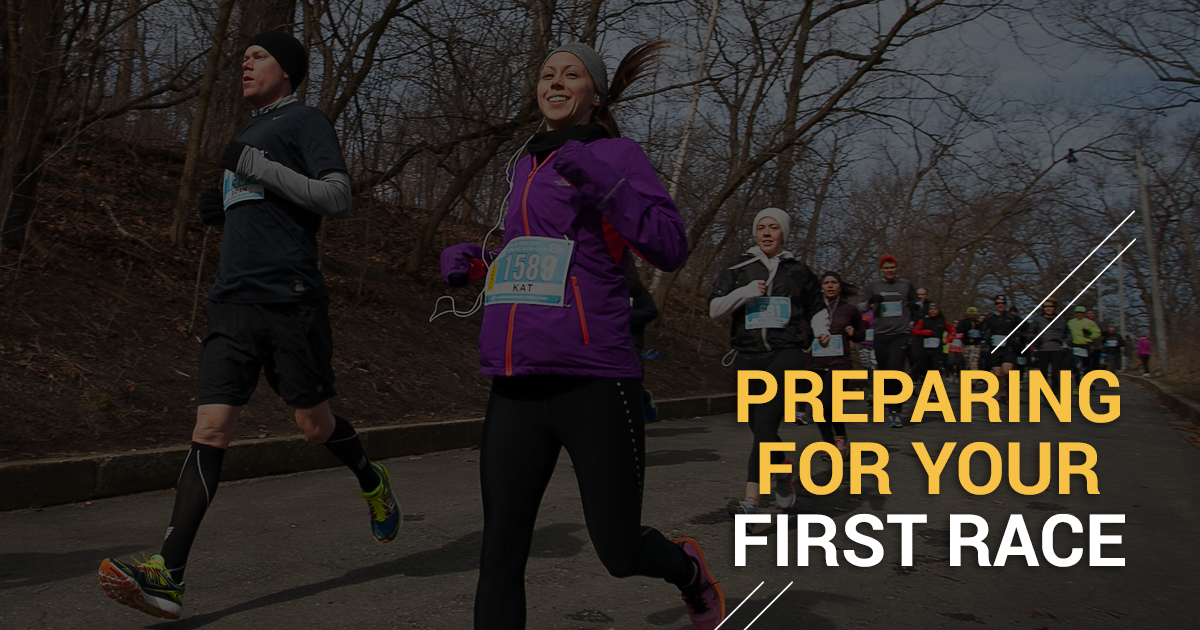
With race day approaching fast, it can be daunting if it’s your first one. There are so many tips and to-do lists all over the internet, but which ones are actually useful? Sometimes the lists are so long, the race prep becomes scarier than the race itself! Here are a few of our key preparation tips for running your first race:
The week before the race:
Races are meant to be fun. They’re great community events with an incredibly positive atmosphere for both runners and spectators. Locals line the course and cheer you on; volunteers take time to ensure your race experience is top-notch; and you get to celebrate accomplishing your own goals amongst other like-minded people. Race day is an exciting time! Even if it doesn’t pan out exactly as you had planned, soak in the experience and take what you’ve learned into the next race.
Course tours are a great way of familiarizing yourself with what to expect on race day. Knowing what hills or tight turns there may be, will better prepare you and alleviate any unnecessary stress. If nothing else, it’ll prevent you from getting lost!
In the days before you race, try to stay off your feet as much as possible. Doing additional training in the week before a race won’t make you more fit, in fact it can just make you more tired. Relax, enjoy the taper knowing that the hard work is done!
The key to the carb-loading phenomenon is to gradually increase your carbohydrate intake in the few days before the race. Lower training volumes and higher carb consumption allows the muscles to store more fuel to be utilized on race day. Eating one massive bowl of pasta the night before a race won’t help your energy stores and can leave you feeling heavy and bloated.
If you have a particular meal that you eat the night before long runs, or big workouts, that’s the meal you should have the night before the race. Trying anything new can put you at risk for GI distress during the race.
Your bib is one of your essentials for race day. Head to the race expo/package pickup as soon as you can to make sure you have everything you need. Pin it on whatever top you’ve decided on to be ready for race day morning.
Lay out your gear and know where your necessities are. Plan on wearing an outfit that you know doesn’t cause any irritation; prepare a race-day breakfast that you’ve had success with before; and don’t try out new shoes or race fuel on race day. Stick to what you know!
Pre-race nerves can leave people feeling anxious and can interrupt their sleep. Rest east knowing that it’s actually the sleep you have two nights before a race that is the important one!
Race day:
The days leading up to the race are when you should be hydrating, but race morning isn’t the time to be chugging back fluids. Sip at water or electrolytes in the morning, but don’t go overboard.
Having picked up your race bib the day of two before the race means that all you have left to do is warmup, use the washroom, and gear check anything you need to. There can be lines of people at the port-o-potties or gear check tents, so arrive with enough time to factor that in. You don’t need to start your race with a sprint to the start line.
Don’t forget to carry a piece of ID, write your information on the back of your bib, and bring your credit card or cash in case something goes wrong. There are always plenty of volunteers and spectators along the race that will be able to help you, but you want to be overly prepared. Just in case.
If it’s going to be a rainy day, garbage bags make for excellent throw away rain jackets. They’ll keep your running attire dry and warm, and can be thrown to the side once the race begins. Just make sure to go to the side of the road to toss your bag so you don’t hit anyone running behind/beside you.
Not every race is going to be spectacular, and it’s good to be prepared for that. After the months of training, it’s great to set a few goals: an A goal that could be achieved on a perfect day; a B goal that is reasonable is the conditions or your body is feeling sub-par; and a C goal that has nothing to do with your finishing time. That way, no matter what the day brings, there will be something positive to take away from it.
It’s easy to go off the start line like a bat out of hell, but it’s important to keep your adrenaline in check and start conservatively. The first part of the race usually feels easy as your muscles are fresh and ready to go. If you start too fast, the time you’ve “banked” can come back to bite you in the butt later in the race when the fatigue sets in. Try and maintain an even pace, and if you’re feeling good, expend that remaining energy in the final stretch to the finish line.
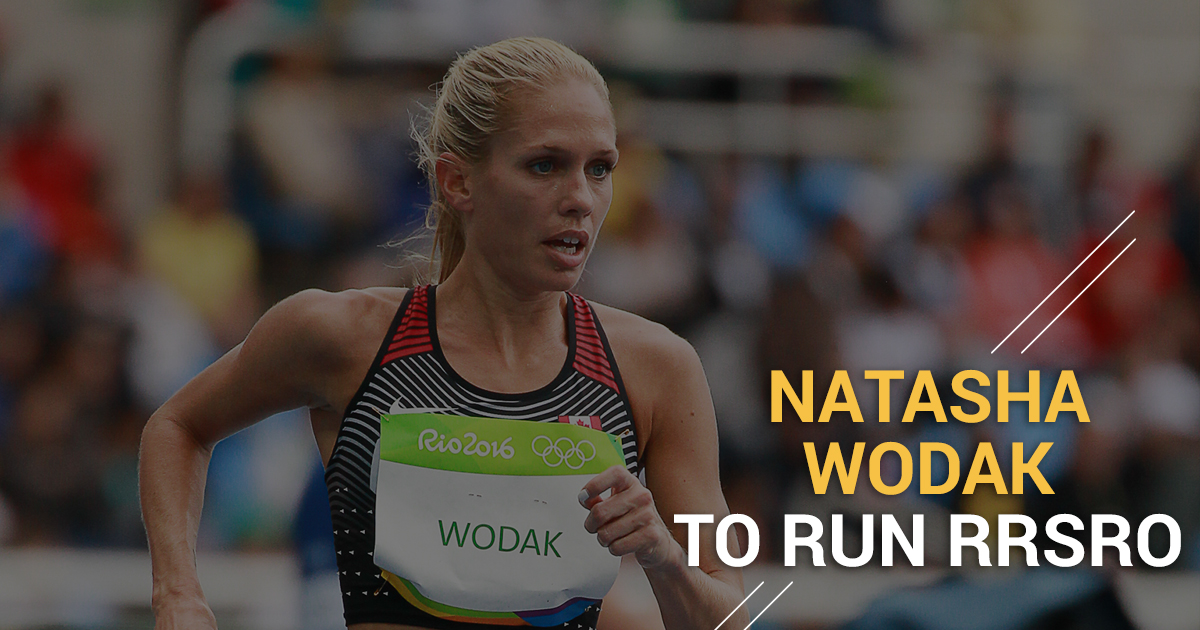
Over its four-decade history the Race Roster Spring Run-Off 8km has seen world champions and record holders dueling with the nation’s best in a race which traditionally kicks off the racing season.
This year marks the 40th running of the prestigious event – the second with Race Roster as title sponsor – and Canadian Olympian Natasha Wodak is making her debut (Saturday April 8th).
Wodak is the Canadian 10,000m record holder (31:41.59) and represented Canada at the Rio Olympics finishing 22nd in the 10,000m. In addition, she holds the Canadian best performance at the 8km road distance (25:28).
Most athletes turn up here to Toronto’s High Park wondering what kind of shape they have managed after the winter. Though she always delivers a stellar performance on the roads she too is approaching the race cautiously.
“I haven’t raced since September,” the 35 year-old admits. “I was looking for something a little less than a 10k and this race is part of the Canada Running Series. I like all of (race director) Alan Brookes’ events and I thought it would be a good start to my season. It’s something I have never done before and I always like going to Toronto.
“I had surgery on my right toe on December 23rd. I have really bad arthritis in my toe joints and it ended up fracturing the toe. There was a piece of bone fragment that had to be removed and then they shaved down the bone spur to increase the mobility in the toe joint.”
She believes that the toe issue lay at the cause of several injuries the past few years including plantar fasciitis and a couple of stress fractures. These prevented her from a lengthy block of uninterrupted training which begs the question: what could she accomplish fully fit?
Now, well recovered, Wodak has slowly increased her mileage with a berth at the 2017 IAAF World Championships in London remaining the year’s top priority. She qualified with her performance in the Rio Olympics (31:53.14).
“I just want to get in a race, a hard effort under my belt, to start this season,” she says of the Race Roster Spring Run Off. “I was going to open at (her hometown) the Vancouver Sun Run but I really want to do well at the Sun Run so I thought I need one race before it. I thought this is perfect, a race I haven’t done before.”
The reputation of the Race Roster Spring Run Off is well known to Wodak. The women’s outstanding course record of 25:50 was set in 1990 by Britain’s Jill Hunter (now Boltz) while the men’s record is held by Daniel Komen of Kenya, an equally remarkable 22:35. Such is the calibre of some of these champions that three years later Komen was both world 5000m champion and world 5000m record holder.
The race was founded in 1978 as a means for RMP, the Canadian distributor of Brooks Shoes, to promote the brand while putting something back into the sport. Mike Dyon, himself a former national marathon champion, remembers the race’s inauguration well. As one of the principals of RMP Athletic Locker – along with his father Robert and brother Paul – he founded the race with the help of his club, Etobicoke Striders.
Dyon says they were pleased with how quickly the race grew into one of the biggest local races reaching 1,000 plus entries within the first few years. Held inside the park, it affords spectators many opportunities to see the race. He also fondly remembers his late father’s idea of giving out maple syrup to the top ten finishers. This has become a race tradition.
“He also came also up with the idea of having a bagpiper pipe everybody down to the starting area,” Dyon adds.
In 1981 the race became the first in Canada to offer prize money, helping turn the tide towards professionalism.
Former Canadian 1,500m record holder, Dave Reid, a club mate of the Dyon brothers, has attended and volunteered at all but one of the races. The athletic performances of the superstars like Komen, the US’s Ed Eyestone, and 1995 world 10000m champion Sally Barsosio, are well etched on his mind.
In 1994 Barsosio, he remembers, had to be coaxed out of the Grenadier Restaurant where she was sheltering from the bitter cold. Even though she missed the start she went on to win the race. Three years later she was crowned world 10000m champion. But his personal highlight was the 2003 edition held in the aftermath of a devastating ice storm.
“I get up Saturday morning, ice everywhere, and get to the park at 4:00 a.m.,” Reid remembers. “The main maintenance guy had actually pulled two massive plows and salters off the main streets. They were working like mad all throughout the night, right up till the 10:00 a.m. race time.
“At 8:00 a.m. the police wanted to cancel the event and I told them that it would be safe by race time. The workers salted and plowed the two huge hills about ten times and sure enough the race went off. I still can’t believe we pulled it off or that 1,400 runners showed up.”
That infamous Spring Hill Road has seen many a fine runner humbled. Organizers have capitalized on this with a ‘Kill the Hill Challenge’ whereby runners can compare their times up the 365 metre long climb. The prize, naturally, is a bottle of maple syrup.
This year, following the race all participants and their families and friends can head over to Henderson Brewing Company for a complimentary beer. The brewery is also providing a Grand Prize to the top fundraising team at the Race Roster Spring Run Off.
Another addition to the event is a free training run led by 2016 Canadian Olympian Genevieve Lalonde and Tribe Fitness this Saturday morning, March 18th.
And so Wodak is stepping into a race with illustrious history and charm relishing the opportunity. Like all Olympians she has extraordinary ambition for the upcoming year.
“Obviously the World Championships this summer,” she explains. “I already have the qualifying time. So that is awesome. I would like to get fully healthy and run a fast 10k and hopefully a fall marathon.”
The Race Roster Spring Run Off will give her an indication of her progress towards these goals.
-30-
To run with Natasha Wodak at the Race Roster Spring Run Off or for more information on the Training Run: https://canadarunningseries.com/race-roster-spring-run-off/